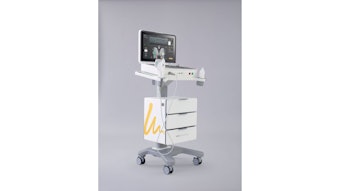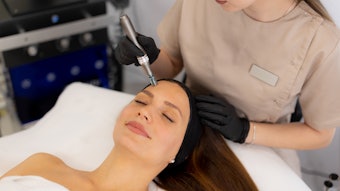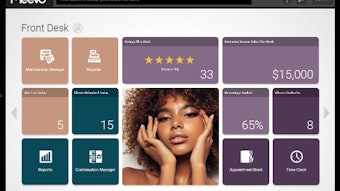
Abstract: Selling your services to new patients can be extremely difficult, so creating a marketing strategy that tells the story of your practice through past patients can be a wise move. By offering potential patients an idea of what they can expect and gain from working with your practice by building past patient profiles, you begin to create a dialogue with them that is a major part of today’s communication system.
It’s a simple fact: No one wants to be sold to. When it comes to advertisements and promotions, consumers are inundated with hundreds of messages a day. From text message alerts to Twitter promotions, there is more competition than ever vying for your market’s attention and hard-earned dollars. So how do you remain competitive and ensure your message is heard in a market screaming with claims, including some that tout unrealistic results?
Simply put, you revert to one of the oldest methods of communicating: You tell a story. No one wants to hear a sales pitch, but everyone loves to hear narratives of people’s journeys and personal triumphs. It is the basic premise of reality TV and even the secret behind the explosion of social media. Modern consumers are looking for more than swift slogans and catchy sales jargon. They seek and ultimately respond to communication and marketing that is realistic, engaging and relationship-driven.
In what could be called a patient profile campaign, you can restructure your approach to reaching patients by sharing the stories of those who are advocates for your practice. These profiles can feature nonsurgical or surgical treatments, creating a platform from which your practice ambassadors can speak. Profiles bridge the results patients see with how they feel following their procedures. Before-and-after pictures are effective at showcasing physical results; however, the emotional transformation that takes place for a patient is typically absent from these photos. For your marketing efforts, the chapters of the story you want to tell consist of before-and-after photographs, a real-life after picture and answers to interview questions.
The how-to
Begin with the end goal in mind, and identify the top treatments you want showcased. Next, find five to 10 patients thrilled with their treatment outcomes. When contacting these patients, let them know their results were so great that your office has chosen them to be among a select few to be featured in a campaign by the practice. Many patients are flattered to be asked, and even if they decline they typically appreciate being considered.
Once a patient agrees, identify her best before-and-after photos and store them for later. Next, provide the patient with a photo consent form to sign and have her send it back, providing the necessary image release documentation. Then instruct participating patients to e-mail a photograph of themselves looking and feeling their best at a recent event, on vacation or even at home. The photo should reflect how patients feel after treatments.
For the interview portion, your staff can e-mail the patients questions, or phone interviews can be conducted. For the latter option, a phone call recording service can serve as documentation of the call and also be used to create audio testimonials. Interview questions should start at the beginning of the patients’ journeys, inquiring about how and why they decided to use your services. Make sure to ask how they felt the day of their procedures, as well as immediately after. Then move into post-treatment questions such as “How did you feel a month later?” or “What feedback did you receive from your friends and family?”
Although the process is relatively simple, it is helpful for the staff to have a checklist of steps to complete for each patient to ensure all necessary information is gathered. The beauty of these initial efforts is that most of the legwork can be completed in a day or two, and the information gathered can be used in a variety of different mediums. For practices really wanting to maximize the reach of these efforts, consider incorporating a second interview, reaching out to patients’ significant others. Some of the most powerful credentialing for a procedure are testimonials from friends and family talking about the positive transformation they witnessed in the patients.
Now that you have all the right ingredients, it is time to create the profiles. Choose the patients’ best quotes from their interviews or write a paragraph explaining the patients’ experiences, and have a designer partner these phrases with the pictures you have gathered. Make sure to indicate what treatment the patients received and even consider noting “Actual Patient, Untouched Photos” to properly leverage your work. You now have a powerful marketing tool that includes testimonials, photos and facts that will catch your audience’s attention and educate on the opportunities you offer.
The idea of creating a campaign hones in on using these images and words to strengthen your brand by creating consistent messages across different marketing mediums. A launch party or open house that features the profiles is a great way to generate interest and excitement for your efforts.
Their voice
A secondary value to educating potential and current clientele through past patients is that you are creating peer-to-peer communication. By showcasing the voices of those who have used your services, you are taking an active approach to engaging in the new era of patient education. In the past, marketing traditionally embodied a one-way communication model. Present-day marketing consists of creating an open dialogue between you and your target audience. By showcasing your patients, you are taking the first steps to engaging in this bilateral communication model that modern consumers are craving.
Web and social media strategist Ashley Ludgood explains why it is critical to embrace your patients’ voices. “We are in an age where celebrities are everyday people. Through the plethora of viral mediums available on the Web, consumers are empowered to become their own reality stars and use these channels to spread their own messages and opinions. They recognize how influential they are, and by embracing something as simple as profiling your patients, you are encouraging potential patients to join your practice’s community,” she says.
The difference between selling and educating can be as simple as telling a story, and the story you need to tell is the journey your patients embark upon with you. The idea of incorporating profiles into your practice represents a global approach and shift in your marketing efforts. Successful practices are speaking with patients, not just to them. To keep your practice thriving as methods of sending and receiving messages continue to evolve, differentiate yourself by telling stories of past patients that inspire action from your prospective market.










